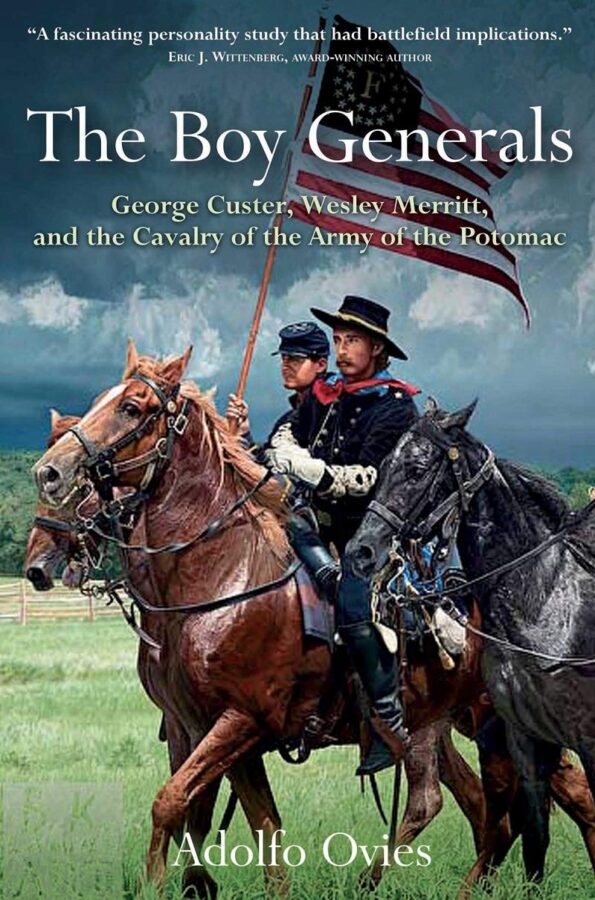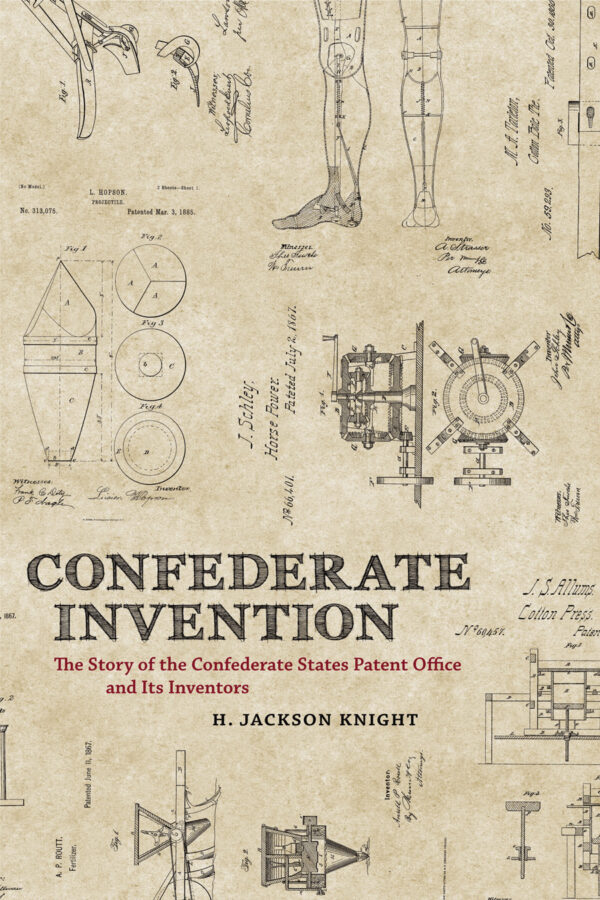The Boy Generals: George Custer, Wesley Merritt, and the Cavalry of the Army of the Potomac by Adolfo Ovies. Savas Beatie, 2021. Cloth, IBSN: 978-1611215359. $34.95.
 The June 24, 1865, issue of Harper’s Weekly carried a full-page engraving featuring Union generals Philip H. Sheridan, George Crook, James Forsyth, George Custer, and Wesley Merritt. The print, derived from a photograph in Alexander Gardner’s valedictory series, situated Sheridan, Crook, and Forsyth in the image’s center with Merritt and Custer seated at the opposite ends of a table. I have always thought this image served as a metaphor for the relationship between Merritt and Custer. Although both enjoyed success as cavalry officers, had careers that at times mirrored each other’s, and fought for a common goal, the two were at opposite ends of the spectrum in their belief as to how cavalry should be used on the battlefield. The two ultimately became bitter rivals. The origins of that enmity and the contributions each made to the Army of the Potomac’s cavalry through the Battle of Gettysburg are the focus of this exquisitely written study, the first volume of a trilogy by Adolfo Ovies.
The June 24, 1865, issue of Harper’s Weekly carried a full-page engraving featuring Union generals Philip H. Sheridan, George Crook, James Forsyth, George Custer, and Wesley Merritt. The print, derived from a photograph in Alexander Gardner’s valedictory series, situated Sheridan, Crook, and Forsyth in the image’s center with Merritt and Custer seated at the opposite ends of a table. I have always thought this image served as a metaphor for the relationship between Merritt and Custer. Although both enjoyed success as cavalry officers, had careers that at times mirrored each other’s, and fought for a common goal, the two were at opposite ends of the spectrum in their belief as to how cavalry should be used on the battlefield. The two ultimately became bitter rivals. The origins of that enmity and the contributions each made to the Army of the Potomac’s cavalry through the Battle of Gettysburg are the focus of this exquisitely written study, the first volume of a trilogy by Adolfo Ovies.
Based on an extensive array of primary sources and the best scholarship on cavalry operations, Ovies has crafted a volume that supplies a dual biography of Merritt and Custer against the backdrop of cavalry operations in the war’s eastern theater. Ovies meticulously recreates Merritt’s and Custer’s pre-war lives—including their experiences at West Point—and carefully charts their careers from the conflict’s early months through their rise to brigade command just days prior to Gettysburg. While those familiar with Union cavalry operations during the war’s first two years will not find much new information about the engagements in which Merritt and Custer fought (which the author freely admits is not his aim), those seeking an understanding of the interactions these two men had with each other, including their stint as members of General Alfred Pleasanton’s staff, and the intense loyalty they possessed for superior officers, particularly Merritt for General Philip St. George Cooke and Custer for General George B. McClellan, will find Ovies’ book enlightening.
Throughout this fine study, the author not only examines how both men perceived each other, but how their contemporaries viewed them. While Ovies clearly points out that Merritt and Custer had their admirers among the cavalry’s officer corps, by the time both received promotion to brigadier general and brigade command in the summer of 1863, attitudes toward Custer shifted. While Ovies presents compelling evidence to demonstrate that Merritt’s promotion to command of the Reserve Brigade at the end of June 1863 met with “nearly unanimous approval,” Custer’s appointment to command of the Michigan Brigade met with criticism, particularly from General John Buford (239).
This splendid study does more than offer a dual biography of these two iconic figures. It also examines the mythology surrounding Custer. Various newspapers and dozens of early biographers propagated legends about Custer’s Civil War service, including the notion that during the Peninsula Campaign, he was responsible for the capture of the first Confederate flag ever seized by the Army of the Potomac. Although Merritt’s military career was never even remotely shrouded in the same amount of mythology as Custer, Ovies does not shy away from analyzing the stories that sprouted surrounding Merritt’s saber fight with a Confederate officer on Yew’s Ridge during the Battle of Brandy Station. While some of Merritt’s contemporaries, including John Buford, believed it to be Wade Hampton, other historians claim that Merritt engaged Rooney Lee. Although Merritt’s encounter with Rooney Lee has been accepted by some historians and even popularized in a painting by Don Stivers, Ovies notes that doubt remains as to that claim’s validity, too.
While this book offers much to those interested in Merritt, Custer, and the Union cavalry, including discussions at the highest levels of command about training and the utility of various weapons including sabers and Spencer carbines, those interested in historical memory and commemoration will find useful nuggets throughout. Ovies examines the visit that Merritt’s veterans paid to Fairfield, Pennsylvania, on that battle’s twenty-fifth anniversary; he likewise recalls the dedication of Gettysburg monuments by Custer’s veterans.
Ovies’ skillfully researched, eloquently written, and prolifically illustrated study has wide appeal. This book is highly recommended, and I eagerly await the release of the remaining volumes.
Jonathan A. Noyalas is director of Shenandoah University’s McCormick Civil War Institute and a professor in the history department at Shenandoah. He is the author or editor of fourteen books, including most recently Slavery and Freedom in the Shenandoah Valley during the Civil War Era.
